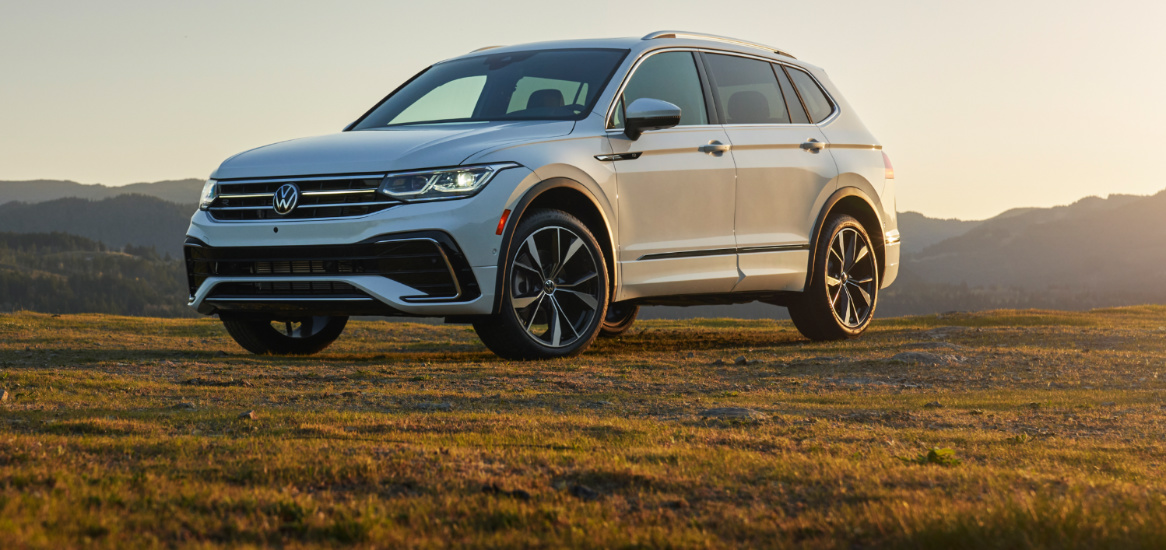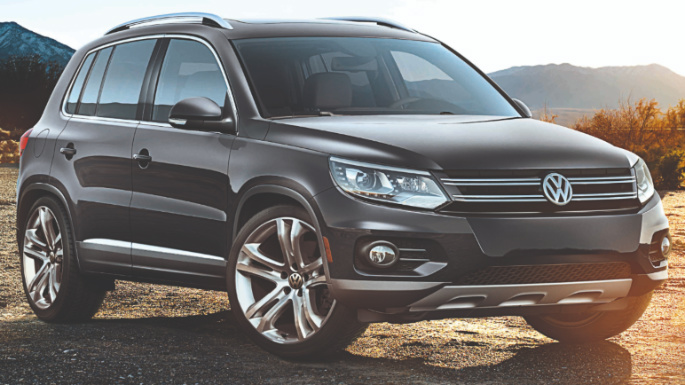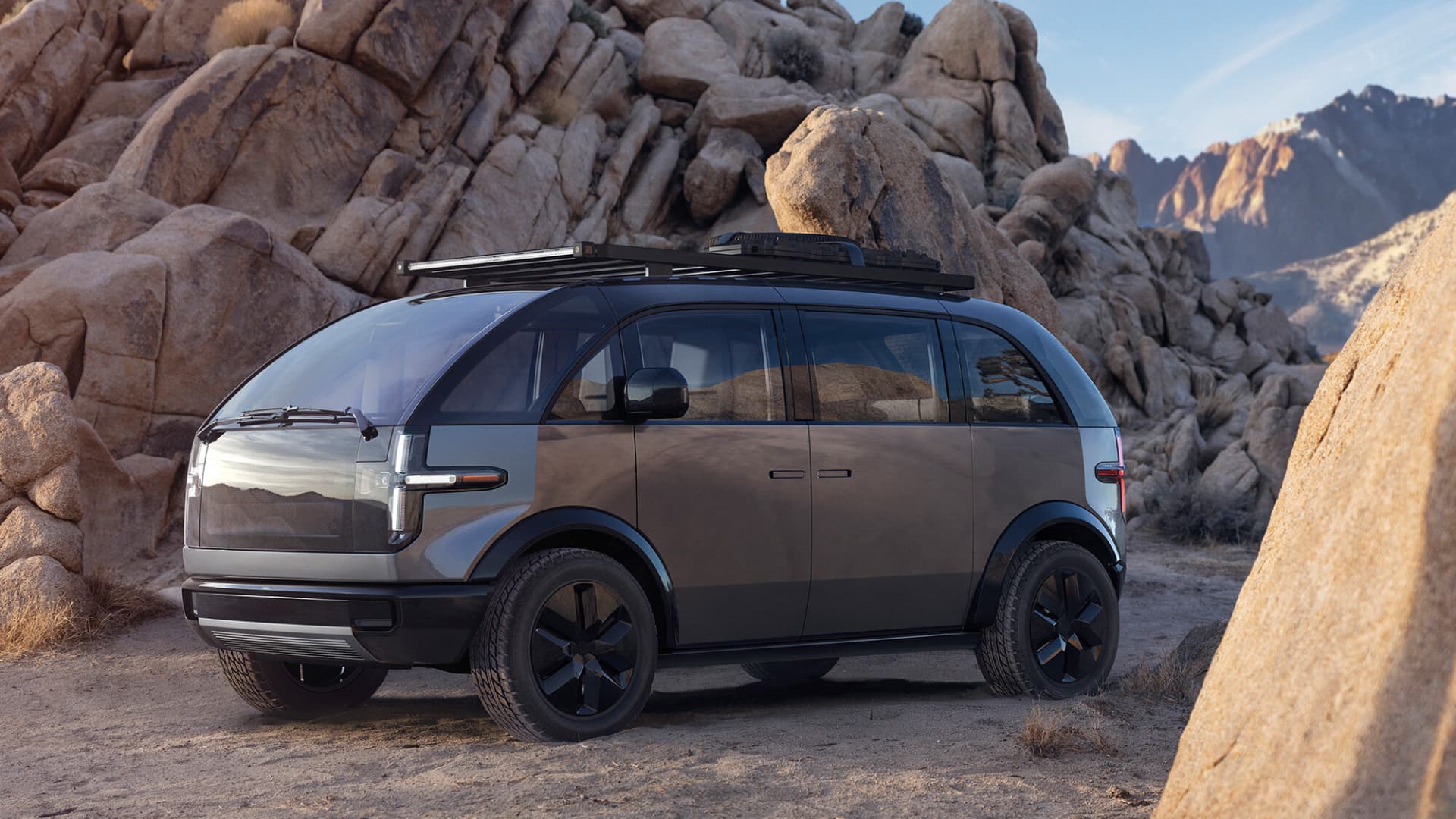The Volkswagen Tiguan is a 4-door, 5-7 seat compact crossover first introduced in model year 2009 and is now in its second generation.
The Tiguan will compete with models such as the Mazda CX-5, Honda CRV, Hyundai Tucson and Kia Sportstage. The Tiguan offers a style consistent with the rest of the brand, with looks that closely match models across the automaker’s lineup, from the Golf GTI hatchback to the large Atlas SUV.
Despite its small size, the Tiguan offers an optional third row of seats, making it a great option for smaller families or those who need to carry seven people occasionally.
2018 – Current Volkswagen Tiguan (2nd generation)
Volkswagen unveiled the second-generation Tiguan at the 2015 International Motor Show in Frankfurt, Germany. The new Tiguan will be produced on his MQB platform, which Volkswagen currently uses to underpin everything from superminis to midsize SUVs.
Thanks to the new platform, the Tiguan has a longer wheelbase, nearly a foot longer than the previous generation Tiguan, with extra-long rear doors and more rear seat space. A third row of seats is standard on front-wheel-drive models, but optional on all-wheel-drive models, seating up to seven. There is also more luggage space in the rear. The two-row model can now accommodate 73.5 cubic feet (the old Tiguan’s 56.1 cubic feet) with the second row seats folded down.
Despite the larger size, the Tiguan retains the traditional two-box SUV look of the previous generation. Other than the inheritance of the VW Atlas’ corporate horizontal grille and lower front fascia, there are no major changes to the exterior.
What the buyer can get in the interior is determined by which of the four trims they choose. His S version of the base comes with standard upholstery, a 6.5-inch touchscreen multimedia system and 17-inch alloy wheels.
The SE trim features an upgraded 8-inch touchscreen infotainment system, leatherette upholstery and heated front seats. The SEL trim adds a panoramic sunroof, 18-inch wheels, and adaptive cruise control (which automatically adjusts the Tiguan’s speed to maintain a safe pace with the vehicle ahead) to the capabilities of the lower trim. The full-featured SEL Premium trim features a Volkswagen digital cockpit, automatic parking assistance, interior ambient lighting and 20-inch wheels. Apple CarPlay and Android Auto compatibility is standard across the product.
The second-generation Tiguan inherits the 2.0-liter turbo engine from its predecessor. The updated engine is rated at 184 horsepower and 221 foot-pounds of torque. Volkswagen has also upgraded all models to his eight-speed automatic transmission. Front-wheel drive is standard, but all-wheel drive is available for an additional fee.
Fuel economy is slightly better than the previous generation. The standard front-wheel drive version is capable of 22 miles per gallon city driving and 47 miles per highway. Several new safety features, such as pedestrian monitoring and automatic emergency braking, are standard on all trims except the base S trim.
2009 – 2017 Volkswagen Tiguan (first generation)
Volkswagen unveiled the first-generation Tiguan at the 2007 International Motor Show in Frankfurt, Germany. Production began later this year at the company’s subsidiary in Wolfsburg.
The German automaker chose the word ‘Tiguan’, a combination of ‘tiger’ and ‘iguana’, to evoke a sense of strength and tenacity.
In fact, the original Tiguan had a sportier stance that didn’t feel as heavy or clumsy as the original VW Touareg. However, it retained the traditional Volkswagen look, including the characteristic grinning chrome grille and slightly squat rear end.
Volkswagen initially marketed the Tiguan as an SUV, but its unibody construction made it more like a crossover with limited off-road potential than a traditional SUV. The original Tiguan used the medium-sized B6 platform of the Volkswagen Passat, which only allowed two rows of seats. The front seats are standard bucket seats, and the rear seats are divided bench seats that can accommodate three people. The rear seats are tight for adults, but passengers were able to slide the seats back for more legroom.
Behind the Tiguan’s seats, 23.8 cubic feet of cargo space can be accommodated. With the rear seats folded down, the cargo capacity expanded to 56.1 cubic feet. The front passenger seat can also be folded to accommodate long items.
When this compact five-seater was launched, it was set to compete with the likes of the Honda CR-V and Toyota RAV4.
For the US market, Volkswagen offered the original Tiguan in three trim levels: S, SE and SEL. R-Line trim was added to the 2015 model, and Wolfsburg and Sport trims were added to the 2017 model. Standard equipment on the mid-level SE trim includes heated front seats, automatic climate control, stereo system with 6-disc changer and roof rails. Front heated seats are now standard on all models from 2016 onwards.
All models were powered by a 2.0-liter 4-cylinder engine rated at 200 horsepower and 207 ft-lbs of torque. Volkswagen paired a turbo engine with his standard six-speed automatic transmission. Buyers interested in the base model could have opted for a six-speed manual transmission, but Volkswagen ditched it for model years after 2015.
Front-wheel drive was standard on all trim levels, and all-wheel drive was optional on SE and SEL trims.
The original Tiguan’s powertrain had excellent performance, accelerating from 0 to 60 miles per hour in 7.9 seconds. Fuel consumption was also average. Automatic transmission models are either front-wheel drive or all-wheel drive and deliver 18 miles per gallon city and 24 miles per gallon highway.
Standard safety features on all trim levels included six airbags, a tire pressure monitoring system and anti-lock brakes. Electronic Stability Control, which detects and mitigates skidding and improves the stability of the Tiguan, was also standard. The 2015 model and later have a rear camera as standard equipment.
https://www.autolist.com/volkswagen-tiguan/volkswagen-tiguan-generations Volkswagen Tiguan Generations











